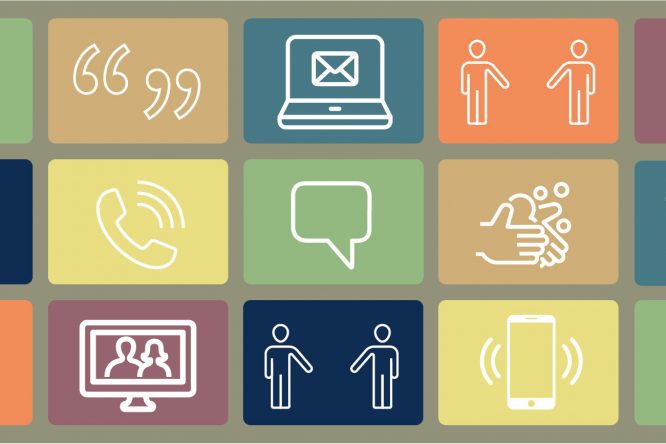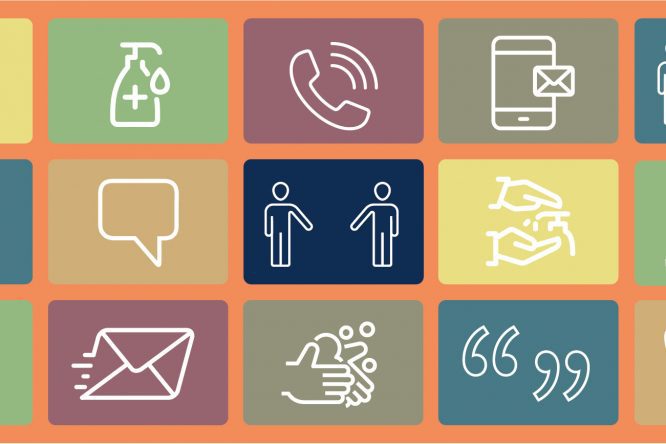This week, we’re pleased to present a guest post by Lynn Perugini, director of sales and marketing at Meadowood At Home, a Continuing Care at Home (CCaH) program that is affiliated with the Meadowood Life Plan Community in Worcester, Pennsylvania.
For over 20 years, Lynn has provided exceptional service to senior communities and their residents. She’s an expert at giving sales and marketing presentations, and when COVID-19 closed the country down, she embraced virtual seminars immediately.
Today, I’d like to share some practical, common-sense tips for giving virtual presentations. These tips engage viewers and lead them to the next step in the sales cycle.
- Prepare, Prepare, Prepare. My biggest tip would be to prepare. The presentation part of it is all of it. Practice your presentation several times before you actually give it. (My family sat through at least four trial runs before I actually gave my first virtual presentation.)
- Set the stage. Consider the background you’re sitting in front of, the level of your camera, what’s around your computer. It’s like a stage show, and all the elements are part of a set. The details need to be right.
- Remember Camera Etiquette 101. My coworkers laugh, but I even do my makeup differently when I’m going to be on camera. Here are some other tips to help you make that on-camera connection with the audience:
- Remember to smile—the audience can see you!
- Use your hands as if you were talking to a friend
- Wear a bright color (and especially, don’t wear black if you have a black chair, or you’ll appear as a disembodied head)
- Wear a headset to signal that you’re connected to the video
- Make sure that your head and shoulders fill the screen
- Introduce yourself on camera at the beginning, then turn the camera off, so the audience can focus on the presentation
- Engage the right monitor (if you have more than one monitor, make sure that the right one is engaged; if you don’t, you’ll be showing people your desktop instead of your presentation)
- Experiment with platforms. My favorite platform is GoToWebinar. I’ve tried Teams and Zoom, but I like GoToWebinar, because it’s easy for my audience of seniors to use. It’s as easy as one click; they don’t have to set up an account, and they don’t have people calling or emailing them. (Many of them are concerned about security.)
- Connect the phone audio. In the demographic I work with, many people have older computers that don’t work well. Now my invitation says, “Click here to see the presentation. Call this number if you don’t have a speaker on your computer.” Give your audience more than one way to experience your presentation.
- Help your audience through the process. Younger seniors are computer-savvy, but the folks over 80 may struggle. If they need help, I walk them through the process, and show them how they can easily get online. That drives registration. I’ve even had people call me for help five or ten minutes before the presentation.
- Make the presentation visually interesting. Avoid using a logo that sits on the screen. Add motion and life, like animating bullet points. That keeps the audience’s attention and acts as a prompt, so you can speak to each item as it flies onto the screen. You can also invite a guest speaker to add interest.
- Mix up the topics. Switch out your presentations and target them to difference audiences. (I change my presentations to target residents who live in 55-and-older communities, people who are interested in long-term care insurance and others.) The world at large has been doing these virtual presentations for four months, and audiences are getting burnt out. We’re all inundated with requests for webinars. And now that the weather is nice, it’s going to be even harder to get people’s attention, so variety is important
- Know that live and virtual are totally different. My online presentation is 100 percent different than my live presentation. In the live presentation, the PowerPoint is just a backdrop. In the virtual presentation, the focus is on the slides—the information has to be clear, easy to understand and attention-grabbing.
- Avoid too much touchy-feely. During COVID-19, people tend to make virtual presentations too emotional. Don’t show 50 slides of people wearing masks. Too much loses people, unless it’s as a background or a quick mention. I try to focus on relevant data—pricing, statistics and how people are using my program.
- Watch other virtual presentations for ideas. I made sure I sat in on at least four or five other, similar presentations; I picked out things that did and didn’t work. For example, one presenter overdid the polling feature—it was a good idea, it just took an agonizingly long time. That experience taught me that it’s best to do a quick poll at the beginning or end.
- Follow up afterward. I send a separate email thanking the audience members for joining the webinar. I also provide them with the financial slides I presented. And I send a link to a New York Times article about Continuing Care at Home programs. When I send that, I tend to get a lot of reply emails.
- Make a virtual event a segue to a live event. At a live event, I can read the audience much better, and they can get to know me as well. At the end of my webinar, I encourage the audience to attend an upcoming live seminar (when it’s up and running). It’s a different level of commitment when people come to an in-person event. It’s easier to build personal relationships there.
I hope you’ve found these tips helpful. I think it’s a great idea to continue to do virtual presentations, even after COVID-19. People are comfortable with them now. They see them as less of a commitment than a live event. I think I’m always going to do them. They’re a new and useful tool for sales and marketing.



